Camera traps have been a key part of the conservation toolkit for decades. Remotely triggered video or still cameras allow researchers and managers to monitor cryptic species, survey populations, and support enforcement responses by documenting illegal activities. Increasingly, machine learning is being implemented to automate the processing of data generated by camera traps.
A recent study published showed that, despite being well-established and widely used tools in conservation, progress in the development of camera traps has plateaued since the emergence of the modern model in the mid-2000s, leaving users struggling with many of the same issues they faced a decade ago. That manufacturer ratings have not improved over time, despite technological advancements, demonstrates the need for a new generation of innovative conservation camera traps. Join this group and explore existing efforts, established needs, and what next-generation camera traps might look like - including the integration of AI for data processing through initiatives like Wildlife Insights and Wild Me.
Group Highlights:
Our past Tech Tutors seasons featured multiple episodes for experienced and new camera trappers. How Do I Repair My Camera Traps? featured WILDLABS members Laure Joanny, Alistair Stewart, and Rob Appleby and featured many troubleshooting and DIY resources for common issues.
For camera trap users looking to incorporate machine learning into the data analysis process, Sara Beery's How do I get started using machine learning for my camera traps? is an incredible resource discussing the user-friendly tool MegaDetector.
And for those who are new to camera trapping, Marcella Kelly's How do I choose the right camera trap(s) based on interests, goals, and species? will help you make important decisions based on factors like species, environment, power, durability, and more.
Finally, for an in-depth conversation on camera trap hardware and software, check out the Camera Traps Virtual Meetup featuring Sara Beery, Roland Kays, and Sam Seccombe.
And while you're here, be sure to stop by the camera trap community's collaborative troubleshooting data bank, where we're compiling common problems with the goal of creating a consistent place to exchange tips and tricks!
Header photo: Stephanie O'Donnell
- @eliminatha
- | she
Passionate wildlife researcher dedicated to uncovering the secrets of the natural world via the lens of camera traps. With a sharp eye for detail and a strong commitment to wildlife conservation.
- 3 Resources
- 0 Discussions
- 5 Groups
Aarhus University
Biologist and Research Technician working with ecosystem monitoring and research at Zackenberg Research Station in Greenland





- 19 Resources
- 270 Discussions
- 7 Groups
- @bluevalhalla
- | he/him
BearID Project & Arm
Developing AI and IoT for wildlife





- 0 Resources
- 45 Discussions
- 8 Groups
- @erinconnolly
- | She/her
University College London (UCL)
PhD Student at UCL's People and Nature Lab. Studying human-livestock-wildlife coexistence in the Greater Maasai Mara Ecosystem, Kenya.
- 0 Resources
- 0 Discussions
- 8 Groups
- @HRees
- | Him/His
WILDLABS & Fauna & Flora
WILDLABS - Programme Development Manager, keen interest in bats, hyenas and tech!





- 13 Resources
- 3 Discussions
- 6 Groups
Royal Society for the Protection of Birds (RSPB)
- 0 Resources
- 0 Discussions
- 5 Groups
- 0 Resources
- 4 Discussions
- 2 Groups
- @Halima_Hassan
- | She
Halima Hassan is a geographer, environmentalist, educator, and climate change activist who is passionate about bridging science, community, and conservation.
- 0 Resources
- 0 Discussions
- 6 Groups
- @a.zubiria
- | she/her
- 0 Resources
- 2 Discussions
- 11 Groups

- 0 Resources
- 0 Discussions
- 3 Groups
I am a recently graduated Computer Scientist and Mathematician passionate about animals and nature.
- 0 Resources
- 0 Discussions
- 11 Groups

- 0 Resources
- 0 Discussions
- 15 Groups
Microchip has just announced the 1 GHz SAMA7G54 single-core Arm Cortex-A7 microprocessor (MPU) with MIPI CSI-2 and parallel camera interfaces, as well as up to four I2S, one SPDIF transmitter and receiver, and a 4-...
3 June 2022
30 May 2022
Check out this round-up of three of the latest conservation tech studies and news. See more conservation tech news by subscribing to our bi-monthly digest.
24 March 2022
Community Announcement
Are you an early career Kenyan conservationist looking to explore emerging conservation technologies while networking with a strong cohort of other female leaders? Apply now for our 6-month Women in Conservation Tech...
8 March 2022
We're proud to introduce the first WILDLABS On the Edge Fellows for 2022, Loretta Schindlerova and Meredith Palmer! Working alongside expert Edge Impulse mentors, these two fellows will use embedded machine learning to...
10 February 2022
This article argues for a conservation method that integrates monitoring technology and community knowledge. Focusing on pangolins, the most trafficked animals globally, the study combines camera trap data from the...
20 December 2021
Camera trap wildlife surveys can generate vast amounts of imagery. A key problem in the wildlife ecology field is that vast amounts of time is spent reviewing this imagery to identify the species detected. Valuable...
20 December 2021
This study breaks ground in outlining a methodology for a system of low-cost, long-term camera traps (Dispersed Environment Acquatic Cameras) that can be deployed over large spatial scales in remote marine environments...
30 November 2021
In Ellie Warren's interview with Sara Beery as part of the Technical Difficulties Editorial Series, they discussed how the hype surrounding machine learning impacts our perceptions of failure, and how conservationists...
23 November 2021
CAIMAN is a product from the Sensing Clues Foundation that automatically classifies animals on images from camera traps. It aims to be available by the end of 2021, contact the Sensing Clues team for more details. This...
18 November 2021
In her case study from our Technical Difficulties Editorial Series, Juliana Masseloux discusses her challenges in working with camera traps to study elusive and rare animals like the pangolin, and shares her best advice...
11 November 2021
June 2025
July 2025
October 2024
event
58 Products
Recently updated products
4 Products
Recently updated products
| Description | Activity | Replies | Groups | Updated |
|---|---|---|---|---|
| Hi everyone,We all know camera traps are great at telling us what species showed up, where and when—and sometimes even ... |
|
Camera Traps, Data management and processing tools | 12 hours 2 minutes ago | |
| We have spent the past 9 months taking the lessons learnt from the AMI system to build an automated moth monitoring system... |
|
Autonomous Camera Traps for Insects, Camera Traps | 1 day 8 hours ago | |
| Lively and informative discussion, I would very much like to contribute if there is some active development work with regards to this. I have recent experience with using... |
+31
|
Data management and processing tools, Camera Traps, Software Development | 5 days 23 hours ago | |
|
|
Latin America Community, Acoustics, AI for Conservation, Camera Traps, Drones, Early Career | 2 weeks 6 days ago | ||
| @LukeD, I am looping in @Kamalama997 from the TRAPPER team who is working on porting MegaDetector and other models to RPi with the AI HAT+. Kamil will have more specific questions. |
|
AI for Conservation, Camera Traps | 3 weeks ago | |
| Hi Ștefan! In my current case, I am trying to detect and count Arctic fox pups. Unfortunately, Arctic fox does not seem to be included in the training data of SpeciesNet but... |
+16
|
AI for Conservation, Camera Traps | 3 weeks 1 day ago | |
| Interesting. Thanks for the explanation. Nice to hear your passion showing through. |
|
AI for Conservation, Camera Traps, Data management and processing tools, Open Source Solutions, Software Development | 3 weeks 3 days ago | |
| Weeks with continuous inference would require a pretty big battery. I expect you would need some kind of customisation and maybe quite a bit of compromise to last weeks and on a... |
|
Camera Traps | 3 weeks 3 days ago | |
| 📸 Do you use camera traps in your work? Take part in our survey!Hi everyone! I’m currently a final-year engineering... |
|
Camera Traps, AI for Conservation, Data management and processing tools, Open Source Solutions, Software Development | 3 weeks 4 days ago | |
| That's great! |
|
Camera Traps | 1 month ago | |
| True, the US ecosystem is a challenging space right now, for basically all sectors. We should not let the US chaos prevent us from engaging with opportunities in other... |
|
AI for Conservation, Camera Traps, Connectivity, Drones, Emerging Tech, Ethics of Conservation Tech, Marine Conservation, Sensors | 1 month 1 week ago | |
| Yes, I know about this big limitation,As far as I know they are working to increase the coverage available for this solution.For trusted developers, there are more regions... |
|
Connectivity, Camera Traps | 1 month 1 week ago |
AI triggered camera trap - monkeys
13 October 2024 11:45am
21 October 2024 2:56pm
Very impressive Kim! It actually took me a minute to find them in the first picture! Are they baboons (if they aren't then this is definitely proof that I shouldn't creat any training datasets!)? Can't wait for the thermal tests!!
Cheers,
Rob
21 October 2024 3:08pm
Yes baboons. But this area has a few different primate species. In the weekend three species were present.
Yes, the thermal ones will be spectacular. I wondering what other species will jump into the picture when we start with that. The 640x512 thermal camera I'm testing is really amazing. Now I'm onto testing a 1280x1024 resolution thermal camera. That's going to be super interesting! As soon as I have some nice images I'll post them.
Recycled & DIY Remote Monitoring Buoy
15 January 2024 1:14am
3 October 2024 9:16am
Hi Brett,this ocean lab sychelles is great to hear from you! I love your remote monitoring buoy project, especially the recycling of DFAD buoys and the design of custom-built ones that are full of interesting features. The expandability of the navigation buoys enabling it to be configured as hydrophones, cameras, or water quality monitors is a great feature. The technical marvels, such as recycling DFADs' circuits, making your own hydrophone, and designing a super-efficient system, are terrific. Moreover, it is encouraging to witness the deployment of your early system, particularly the live video and water quality data you have collected. You will definitely make a positive impact on the Wildlabs community with your knowledge of electrical engineering and software development. I care to hear more of your discoveries and any news that you will be sharing. Keep doing what you excel at!
8 October 2024 8:46am
Thank you for sharing!
21 October 2024 12:45am
Hi Brett,
I am interested in developing really low cost multi channel underwater acoustic recorders. Can you tell me a bit more about the board and stuff you were using for yours? You can get me at chris@wilcoanalytics.org.
Thanks,
Chris
Deepfaune v1.2!
4 October 2024 4:12pm
9 October 2024 12:01am
Edit: SOLVED Thanks!
Thank you so much for this awesome work! I was trying to load the v2 model the same way as in classifTools.py:
model = timm.create_model(backbone="vit_large_patch14_dinov2.lvd142m", pretrained=False, num_classes=len(class_names))
ckpt = torch.load(weight_path='deepfaune-vit_large_patch14_dinov2.lvd142m.v2.pt', map_location=device)
state_dict = ckpt['state_dict']
new_state_dict = {k.replace('base_model.', ''): v for k, v in state_dict.items()}
model.load_state_dict(new_state_dict)
but it fails with this error:
Error(s) in loading state_dict for VisionTransformer:
size mismatch for head.weight: copying a param with shape torch.Size([30, 1024]) from checkpoint, the shape in current model is torch.Size([26, 1024]).
size mismatch for head.bias: copying a param with shape torch.Size([30]) from checkpoint, the shape in current model is torch.Size([26]).
Are you using a different backbone for v2? I tried BACKBONE= '"vit_large_patch14_dinov2.lvd142m.v2" but that also doesn't work.
15 October 2024 12:53pm
For the record now that this is here:
This error typically occurs when the wrong number of classes is given to timm.create_model.
You should try to specify num_classes=30 manually (for this v1.2, number can change in future versions as we add new species).
Also, for issues please do reach out (as Jennifer did) by email, we will be much more responsive. More general questions/discussions can be asked here, I will reply asap.
Your thoughts on this camera
8 October 2024 10:32am
10 October 2024 8:58am
Sure, I'd like to , but don't have the badge yet. ;)
10 October 2024 9:02am
Hi Carly,
I've got you point, that's the reason why we want to make a new edition of our Planet Watch initiative to support the scientific community.
Best regards,
Adrien
14 October 2024 8:21am
Product added to the Inventory : Tikee
Support no-code custom AI for camera trap images by filling out this survey
2 October 2024 10:43pm
📢Declas - New Open-Source Tool for Camera Trap Data🎉
30 September 2024 7:10pm
Integrating Satellite Data with on-the-ground conservation tech
9 September 2024 4:59pm
20 September 2024 3:12pm
Hi, Seamus—welcome to WILDLABS!
I work on building ground and sea-truthing technologies for satellite remote sensing related to conservation tech. For example, we have used data collected from Smartfins (thermometers on surfboard fins) to validate Landsat TIRS thermal data and other low-cost tech such as mini- and sensing Secchi disks to evaluate satellite ocean color data. I don't work in conservation tech in the strictest sense (more accurate to say coastal water resources/resilience), but of course it's related, so thought I'd chime in.
Sounds like a great position at Planet, and an important pursuit—good luck, and I hope our paths cross!
24 September 2024 6:02pm
Hi Phil,
Thanks for sharing - this is really interesting work!
Seems like a cool integration of ground-based (or ocean-based) data and satellite data, with a community science aspect as well. I look forward to giving this paper a full read.
Thanks,
Seamus
setting up a network of cameras connected to a server via WIFI
3 April 2022 7:19am
17 July 2022 8:21am
Cool thread!
I will be testing Reolink Wi-Fi cameras in combination with solar powered TP-Link long range Wi-Fi antennas/repeaters later this field season for monitoring arctic fox dens at our remote off grid site in Greenland. The long range Wi-Fi antennas are rather power hungry but with sufficient solar panel and battery capacity I am hopeful it will work.
I am looking forward to explore the links and hints above after the field season.
Cheers,
20 November 2023 9:39am
Thank you for the links, Robin.
17 September 2024 5:00am
Dear team,
I am new to WildLabs. It's great to find all the interesting and informative discussions.
We are exploring deploying "connected" camera traps in wetlands (2 hectares for the pilot, 300 hectares for the next phase) and our goals are:
- Set up the camera traps to upload images (via FTP or HTTP POST) to cloud storage every 5 minutes
- Analyze the images using AI to remove all false positives (images without animals)
- Deploy off-the-shelf camera traps that support WiFi (preferred) or 4G cellular
Questions:
a. Any suggested camera traps that support WiFi (preferred) or 4G cellular?
b. What WiFi infrastructure is recommened to connect camera traps at 200m to 500m distances?
c. Does anyone have experience using MANET (mobile ad-hoc network)?
Cheers,
Andre
Ideas for easy/fast maintenance of arboreal camera traps
30 August 2023 8:51pm
17 November 2023 9:19am
Hi Ben,
I would be interested to see if the Instant Detect 2.0 camera system might be useful for this.
The cameras can transmit thumbnails of the captured images using LoRa radio to a Base Station. You could then see all the captured images at this Base Station, as well as the camera's battery and memory information (device health). In addition, you could also change camera settings from the Base Station so you would not need to reclimb the trees to change from PIR sensitivity high to medium for instance.
The Instant Detect 2.0 cameras also have an external power port so a cable could be run to the ground to a DC 12V battery for long term power.
If you wanted to, you could also connect the Base Station to the Cloud using satellite connectivity, so that you can monitor the whole system remotely, but this will incur more cost and power usage of the Base Station.
I'd be keen to hear your thoughts,
Thanks,
Sam
12 September 2024 8:16pm
I'm curious to know if anyone has reliably connected to one of these wifi-enabled cameras set in the rainforest canopy. In some areas, the understory or epiphytes growing on the tree are dense enough to block the signal. This is one reason that we've stuck to climbing into the canopy to check cameras.
12 September 2024 8:25pm
I've deployed and trained others to climb and deploy arboreal cameras in several countries and I agree with Lucy's approach. Leaving a thin cord (like a throw line) to quicken setting a rope in the future is extremely helpful. In rainforest areas that have a lot of curious animals and arboreal insects, visually inspecting your camera trap is important. I agree that climbing into the canopy takes effort, but if you are in the tree yourself, you can control the camera placement, the direction it is facing, its field of view, and prune small branches that may trigger the camera. It would be interesting to have a method to lower a camera from a tree, but you would need a lot of extra gear to install this system for surveys with 15+ camera traps.
Camera trap function in heat waves
29 August 2024 9:59pm
10 September 2024 3:35am
Hi Karen.
It's actually possible that it might not necessarily be the high heat that is causing problems with the batteries. Lithium should be quite durable for the temperatures experienced inside the enclosure. Instead, the problem could likely be condensation. In an enclosure, if the sun shines directly on a sealed enclosure, the enclosure can internally heat up, evaporating any moisture in it and raising the dew point. If the external temperature then cools, the internal enclosure air that comes into contact with the cooler walls of the enclosure can form condensation droplets. If you've ever left a glass jar in the sun, you'd see this phenomenon.
The problem is that if any condensation gets on the internal camera circuit board, its possible that it can potentially conduct enough current to increase the discharge rate of the batteries or in some cases, cause the whole device to go down. We've seen this happen in some of the field devices we deploy and have since protected critical circuitry against condensation.
To avoid this situation, I'd recommend trying to keep your camera traps out of direct sunlight and putting a lot of dessicant inside before sealing them. Not sure if this solves your problem, but hopefully it might help.
10 September 2024 11:04pm
This is good advice. Most lithium batteries should operate fine within a -10c to 60c temp range.
Personally I've only ever encountered issues from cold weather conditions.
Non rechargeable batteries tend to have even wider operating temperatures.
LFP Rechargeable batteries also have better temp ranges.
Word of caution regarding dessicant packs is make sure they aren't touching PCBs. We've seen cases where the packs absorbed moisture but then became damp enough to short out components.
Could also be a bad batch of batteries. Make sure to pre charge them if using rechargeable batteries and measure them while they are connected to a load. Bad batteries will often measure fine voltage wise when not connected to anything but once a load is introduced their voltages drop significantly more than good batteries.
11 September 2024 4:55am
Hi Karen,
Yeah the discharge curves of lithium cells tend to be very stable for a long time and then drop sharply at the end. Akiba and Brett's advice below re: condensation prevention is another great recommendation and could well be the root of your problem. Let us know if you have any questions or if you do any testing etc., as this sort of information is gold!
All the best,
Rob
Funding for Camera Trap Projects
24 January 2024 5:23pm
9 September 2024 12:29pm
Given that I am a Peace Corps volunteer and research is the secondary, though still guiding objective of my work, I was able to apply for grants from private companies such as the Mitsubishi corporation - the only grant I used to directly, though others may be applicable.
I was lucky enough to leverage my relationships with nonprofits that I work with to obtain camera traps. I have 7 total traps - 4 of which were donated by the national park agency of the country I'm working with, and 3 that i bought with my own money. I was in the process of obtaining another 6 from an environmental nonprofit but due to politics within the national park agency that was not a viable option. For the study area i had planned (20,000 hectares) I can cover the area I want but over a longer period. The more camera traps I would have, the faster the study would be completed, but there was a rush on my end.
I have posted grants that I found in my process of searching below:
9 September 2024 12:32pm
GRANTS
https://ptes.org/grants/apply-grant/worldwide-grant-criteria/ - 2024: PTES will be accepting new applications for Conservation Insight Grants in 2024. The deadline for applications is Sunday 25th August at 23.59 (UK time). Please ensure that all reference letters are sent by the referees by the same deadline. The applications will be assessed at a meeting in mid-October and applicants will be notified whether they have been successful or not by the end of October. Projects should start no earlier than January 2025.
https://ideawild.org/application/ - IDEA WILD awards small equipment grants.
We receive equipment requests daily, 50 -70 requests/month, and prioritize them based on conservation impact, recipient need, and project location. Additional consideration is given to projects in areas identified as critical biodiversity hotspots. Our grants serve areas where support is needed most and advance biological research, conservation education, community outreach, conservation management, field training and professional development.
https://www.neotropicalbirdclub.org/conservation/conservation-fund/ - Grants of $1,500 and $3,000 (US Dollars) are available subject to certain conditions. Grants are occasionally awarded for higher amounts (up to $5000). Please contact the Club (see below) to confirm the availability and criteria for higher amount awards.
https://swbg-conservationfund.org/en/grant-seekers/
https://www.speciesconservation.org/grants/ - DEADLINE FEB 29TH - The Mohamed bin Zayed Species Conservation Fund provides financial support in the form of small grants of less than $25,000 to conservation projects globally. These small grants are as much for the species as they are for the conservationists and organizations working so passionately to protect them.
https://whitleyaward.org/ - You might be able to apply for this and connect it to our project - The Whitley Awards provide funding, training and profile to mid-career conservationists who lead grassroots projects in the Global South, benefitting wildlife, habitats and people. Whitley Award winners receive £40,000 and join an active network of 200 alumni across 80 countries and successful projects can go on to receive long-term Continuation Funding, as well as WFN’s top prize – the Whitley Gold Award – worth £100,000.
https://www.wildlifeacoustics.com/grant-program - Wildlife Acoustics may award up to $12,000 worth of eligible products to selected grant recipients worldwide every quarter. Individual applicants may request products and software licenses totaling up to $4,000 quarterly. We will highlight grant recipients and their projects on our website and social media platforms.
https://zaa.org/conservation_grants - The Zoological Association of America (ZAA) offers grants up to $5,000 to support the conservation of endangered species and their habitats globally. Proposals may include field programs, studies, and multidisciplinary approaches to species conservation, habitat preservation, and biodiversity enhancement. The grants are available to principal investigators associated with recognized institutions like accredited zoos, academic institutions, conservation, or non-profit organizations. Proposals can be submitted electronically from January 1, 2024, to April 15, 2024, with decisions made by June 14, 2024
9 September 2024 3:30pm
Hej Vasilios, thank you so much for this list with notes! Much appreciated. Thank you also for sharing your experiences with the Mitsubishi corporation, your non-profit and other non-profits. They are very enlightening! Hopefully also for other grantseekers!
Camera traps for nesting birds
24 July 2024 3:55pm
24 July 2024 4:53pm
Hi @Chelsea_Smith
I am not familiar with the Blazevideo cameras - any chance you have a model number? All I can find are models with nightvision (e.g. A323). I personally like the Solaris 'Weapon', although the trigger time might be slower than the Blazevideo (at least going by what was mentioned in the A323 spec). I'd be interested to hear if the trigger time actually is that fast for the model that was tested? Also, how close are the cameras going to be to the nests? Some trail cameras aren't so great at focal distances closer than a metre or two...
Re: security, the most common approach is to use a steel security box (e.g. choose from the drop-down menu on this page for the A323 security box). For the Solaris, email: alex@solaristrailcameras.com to see if they have something suitable. Most of these types of boxes have cutouts or something for a python security cable to pass through so you can secure the box (and camera) to something like a pole. You could also consider camoflauging.
More than happy to discuss further.
Cheers,
Rob
2 September 2024 9:34am
Hi Rob,
Thank you so much for these suggestions, I'll do a little more research around these and get back to you if I have any other questions! :)
Best,
Chelsea
Camera traps for bird bands
14 July 2024 12:53am
12 August 2024 1:50pm
Hello Steven, I read you comment and I am interested in knowing more about your device that allow to measure weight of a bird when it stays on a perch. I would like to use a similar approach to take record of weight and corresponding pictures of ringed birds (waders). it is possible to have details or suggestions for a DIY project? Thank you
23 August 2024 10:35pm
Im a biologist up in Alaska and have a couple of options that might work for you. We have a time lapse camera we have developed for 'peering' into the nest cup of shorebirds and passerines (focus is set at about 6 inches with a 150 deg lens) and a small mammal camera is designed to sit on a 3 gallon bucket and look downward (about a 11 in focus). I'm curious how these might perform in this scenario so am happy to send a couple for you to try out. Please shoot me an email at my work email address if you are interested: christopher_latty@fws.gov
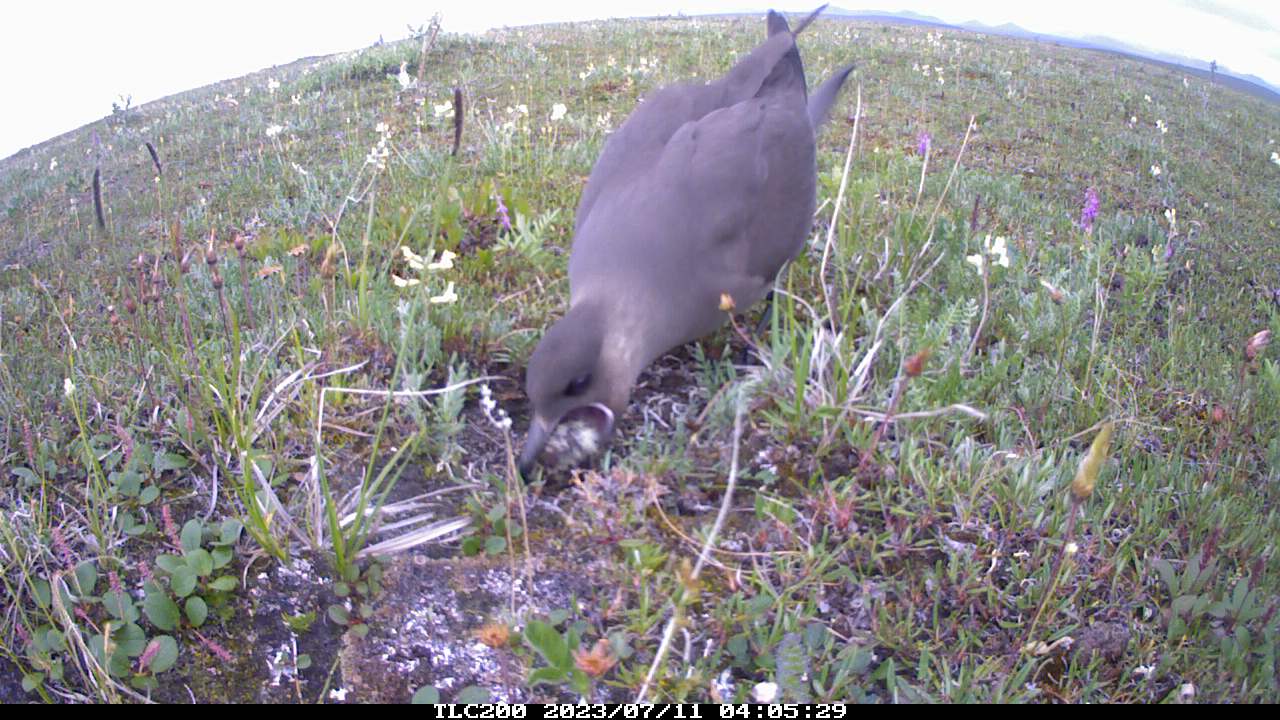
23 August 2024 11:20pm
Hi Patrick,
FYI - I've modified a couple hundred GardePros at this point with a new lens for wider angles and closer focus. Their cameras are pretty simple so easy to take apart for the changeout. We use this lens.
3.6mm, F2.0 Board Lens
This M12 Lens is ideal for standard resolution board cameras. Comes in a Metal Housing.
Community Choice Award Winners: 2024 #Tech4Wildlife Photo Challenge
15 August 2024 2:41am
Cast your vote in the #Tech4Wildlife Photo Challenge Community Choice Awards!
12 August 2024 1:46pm
12 August 2024 9:15pm
13 August 2024 11:26am
AI Based Animal Detection Demo App for iPhone
11 August 2024 9:49pm
Camera traps
31 July 2024 7:12pm
5 August 2024 6:29am
Support for two cameras (or more) can be done by using two USB powered cameras if you have the right platform. Then in principle you can place each camera up to 2m from the processor.
I’ll will be experimenting with such a setup as soon as my USB global shutter camera arrives. Global shutter camera work really well with the AI computer vision that my system uses. Quite a different power category than microcontrollers though.
Currently I’m testing a Raspberry Pi based camera system that is capturing images and video, scanning 3x cameras with ai triggering.
5 August 2024 6:00pm
Interesting explanation
5 August 2024 7:51pm
Very interesting please update us once experiment is successful
Rapid Camera Trap labeling with ChatGPT
17 July 2024 3:19pm
20 July 2024 3:28pm
super interesting, thank you for sharing! definitely will watch!
31 July 2024 6:38pm
Very interesting!!
3 August 2024 7:46pm
Really interesting, I will take a look
AI and Ecology Research Infosession
1 August 2024 3:58pm
23 August 2024 9:44pm
GreenCrossingAI project update
1 July 2024 7:59pm
31 July 2024 6:46pm
great project !!
Integrating AI models with camera trap management applications
25 March 2024 7:47pm
12 June 2024 4:48am
@pvlun , I have a few more questions for you, but I will follow up via email to save this thread. :)
22 July 2024 3:52am
Hi All,
For an update on this topic, check out my article on LinkedIn about bringing BearID to Ecuador. We already have some researchers there using EcoAssist (thank you @pvlun for adding the Peru Amazon models!) and are working on a "biodiversity server" running TRAPPER on an Ampere server at the Universidad San Francisco de Quito (USFQ)!
Bringing BearID to Ecuador (a sabbatical story)
One of the many perks of working at Arm is the sabbatical program. This is described on the Life at Arm page as: After four years of working with us, you can take an extended paid four-week sabbatical to really hit pause or pursue a passion project.
31 July 2024 6:35pm
great idea!!
Effectiveness of Camera Traps on Estimating Small Mammals Home Range.
12 July 2024 1:32pm
24 July 2024 6:13pm
Hello Adventina,
I think camera traps may not be very useful for studying home range of small mammals, as they might appear too small on the camera to be able to identify distinct individuals. However, I'm not entirely sure. Below is a link that I believe will be helpful.
The Use of Selfie Camera Traps to Estimate Home Range and Movement Patterns of Small Mammals in a Fragmented Landscape - PMC
Camera trapping allows scientists to study a range of species, across large areas for long periods of time, with little impact on animals. It has been readily used to study movements and territories of large mammals but not for smaller species. This ...
31 July 2024 6:34pm
Keep digging girll!!
Move BON Development: Follow up discussion
19 June 2024 12:02pm
11 July 2024 10:14pm
You can catch up on the recording at that same link to the June Variety Hour! Lacey's fabulous talk starts around the 9:40 mark :)
12 July 2024 5:38am
Hi Talia!
I feel like the topic is so broad that it might help to put some constraints around things, see what works, and then broaden those out. I have a lot of ideas regarding the data monitoring and collection side based on the other sensor and observation networks we've set up in the past.
There may also be some potential scope to incorporate things like data collection and integrated monitoring to the Build Your Own Datalogger series where the system is updated to feed data into the observation network.
It'd probably take a bit of discussion and coordination. Let me know if interested. I'm fine to jump on a call or discuss via email too.
22 July 2024 9:24pm
@cmwainaina please take a look
Rapid Camera Trap labeling with ChatGPT
17 July 2024 3:02pm
Rat detection, review advice
11 July 2024 9:07pm
12 July 2024 2:05pm
Have you tried any other platforms? There are some other ones like Zamba Cloud, EcoAssist, Mbaza AI, etc.
13 July 2024 3:21pm
I would separate your question into two, re: (a) platforms and (b) AI.
Re: platforms...
One of the advantages (the main advantage?) of working with a cloud-based system is that the storage and data management issues are handled for you. So if a cloud-based system is on the menu for you, check out any of the cloud-based systems I list here (Wildlife Insights, Agouti, TrapTagger, TRAPPER, WildTrax, Animl, etc.).
But cloud-based systems are not a panacea, and there are lots of reasons folks choose to work locally. Often working locally is preferred due to bandwidth, data provenance, or being absolutely sure that your images are archived somewhere you can still access them in five years, but also in general when it comes to pushing lots of images in front of your eyes quickly, nothing will beat a local tool, and among local tools, Timelapse is still the most widely used AFAIK and the fastest for most users. I'll get to this below, but AI might just not help you in this case, so my best recommendation is to invest in really getting to know all of Timelapse's bells and whistles, especially the "quick paste" tool, and all of the keyboard shortcuts. If you're using the mouse to navigate, you've lost the battle already, and 30 minutes learning keyboard shortcuts is worth a week of tinkering with AI.
FWIW in general, no matter what system you use, you'll have to do something with .csv files in R, and overall I wouldn't expect that to be more or less difficult depending on the system you choose.
Re: AI...
@carlybatist is correct, I loooooove difficult MegaDetector cases. Based on your description, it may be the case that small rodents are too difficult, but don't give up hope quite yet; I have a bag of tricks I try in these more difficult cases. I will reach out by email to ask you for some images, and if any of the tricks work, I will post back to this thread.
It also couldn't hurt to try a couple other systems in parallel, just to see what happens, but I'm not optimistic that any other systems will work if "vanilla MegaDetector" doesn't work, in part because the systems that I think are most relevant themselves depend on MegaDetector. But FWIW, the two systems I would try - even if cloud-based systems are not on the menu for you - are Wildlife Insights and Animl. There are other systems out there as per above; I mention Animl specifically because it has grown up around small mammal monitoring on islands, so, maybe a better-than-average shot of doing something reasonable in your case.
IMO the best path to pursue is "Dan's bag of MegaDetector tricks", but I want to set expectations: small nocturnal rodents remain difficult for AI and the odds are not in our favor.
15 July 2024 10:26am
I'm being quite daring by making statements on a forum that is frequented by Dan Morris (obviously in deference to his extensive knowledge on the subject :-) ), but here goes. Likely the version of megadetector that you used was using YoloV5. YoloV5 came out a similar time to YoloV4, which from memory was around end 2019 time frame. Again from memory I think the performance of Yolov5 was similar to that of YoloV4. The versions that came out after this, (Somewhat in order) Scaled Yolov4, Yolor and then yolov7, yolov6 (Yolov8 somewhere in there) are much better at matching smaller objects and in darker conditions. Dramatically so.
PyTorch Wildlife will be releasing a beta of a version that will be using YoloV9. This could possibly help with your problem.
Co-incidentally, I'm playing with megadetector now for detecting and recording mice. This was from this morning: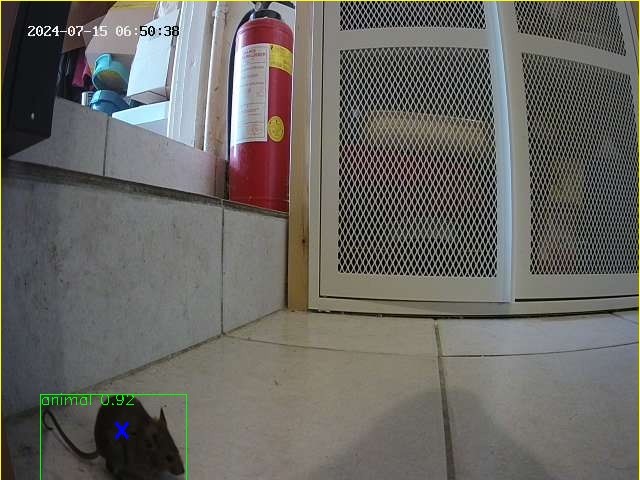
Background subtraction to improve camera trap AI
20 June 2024 12:15pm
27 June 2024 12:07am
This reminds my of this preprint:
FoxMask: a new automated tool for animal detection in camera trap images
https://www.biorxiv.org/content/10.1101/640037v1
28 June 2024 6:14pm
Great paper. Have you tried filtering with a neural network as an alternative to a threshold on the minimum size in step (5)? My thought is that in many cases there is foreground vegetation that will appear relatively large. If, though, one trained a DNN on a sufficient number of labeled masks it’s reasonable to expect it to be at least a decent discriminator.
With ML the problem is always getting the labeled data, but you could potentially bootstrap a DNN with the current output of your (5). That would surely share the same size bias as your current solution, but it would be interesting as a firs step just to see what happens to your false positive rate. The second step would, I think, probably be creating synthetic data with scaled-up vegetation and/or scaled-down wildlife to fine-tune the NN to respond to features of all scales.
12 July 2024 6:17pm
We evaluated background subtraction as part of our pipeline for Zamba Cloud a few years ago. It's going to depend a lot on your backgrounds, but we found that for jungle/forest scenes in videos there was too much movement/noise in the backgrounds for the usual methods to add substantial benefit to the accuracy of our classifications.
To classify frames, we run a very fast distilled version of megadetector to select frames from videos that are likely to have animals and then classify using a CNN. We found this to be much more computationally efficient with respect to accuracy gain versus RCNNs or some dual stream approaches that try to account for movement with something like optical flow.
Camera trap model help
11 June 2024 12:47am
29 June 2024 2:47am
I’m familiar with at least three cameras that may fit your requirements. The list below also contains links to my overview and teardowns of these cameras.
Bushnell Core DS 4K (low glow IR flash).
Per your requirements:
-programmable specific time to operate. For example, I would like to only trigger videos between 6-11am and 4-6pm. : All cameras almost support this. They have a single “operation window” . I.e. you could set the camera to operate 6 am to 6 pm; (or 4 pm to 11am)
-solar enabled (either internal or with external panels): Each of these cameras has an external power supply input which can be used with a 12V Solar panel. Given the humid conditions in the sub-tropics, you will want to keep moisture out of this connector when the solar panel is attached. The connectors in the Browning and Gardepro are not water tight, but you could use a dab of silicone adhesive around the connector to seal it. The Bushnell has a genuinely waterproof connector, but you'll need to get the Bushnell solar adapter. In any case, I would do something to keep heavy rain from falling directly on the camera. A steel security box will do the trick; as will a little “diverter roof”.
-lower number of batteries required (12 like a Reconyx is too many): The Browning and GuardePro use 8xAA batteries; the Bushnell 6xAA.
-support higher capacity SD cards (ie. 512 mb): They all support 512 GB cards.
-screen or bluetooth connection to phone to see image easily while setting up: Oops – none of these cameras support this feature. The Browning (2") and Bushnell (1.5") models have screens that you can preview the scene in as placed, but these are awkward to view when the camera is set low, and without getting your head in the way. The GP also has a preview screen, but to view it, you have to swing open the whole case, which is not the way it’s deployed. A hack we do to aim cameras is to bring along a point-and-shoot camera (or smart phone), place it over the the lens of the trail camera, snap a picture, view, and repeat til the set is perfect.
-ability to replace batteries and SD card without removing camera from a tripod: You can service the SD cards in all of these cameras with tripod attached. The Bushnell and GP batteries can be serviced while still attached to tripod. The Browning requires that you remove the camera from the tripod to get at the batteries.
Some additional factors:
In our experience, the Brownings have the best image quality. If you use the Browning Elite HP5, check out my firmware feature additions which include a fix for a bug which can sometimes corrupt high speed/high capacity SD cards. The bug is rare, but it does happen on some camera/SD card pairs, and would be especially painful to encounter in a long term deployment.
It doesn’t look like you are interested in any night-time captures, so I guess the flash type doesn’t matter. Also, there is effectively no advantage of the second (night time) image sensor in the Bushnell.
For such a long term deployment, I'd recommend narrowing your choices to a couple/few, and buying a full set of each to test in something like your full deployment.
Hope this helps.
12 July 2024 12:12pm
I was going to suggest the Garde Pro too. The model available in Australia is good. I have found that the download from the SD card to the linked phone can take a while, so be prepared to sit around while it happens.
19th Australasian Vertebrate Pest Conference 2024
12 July 2024 12:42am




















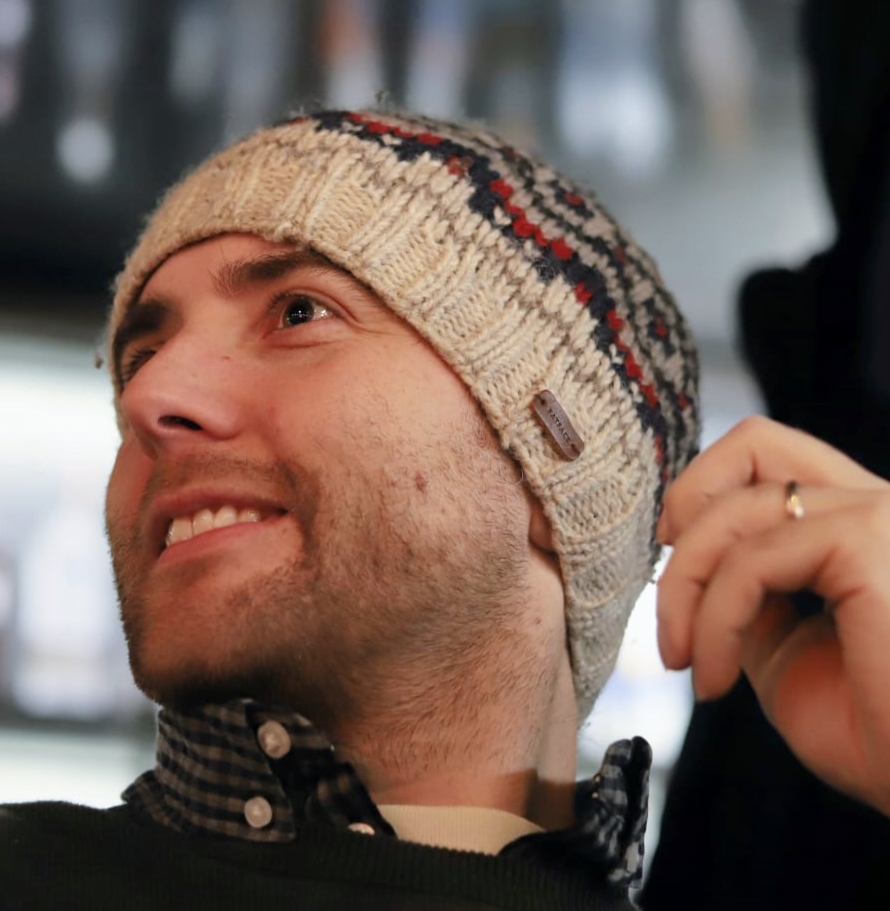















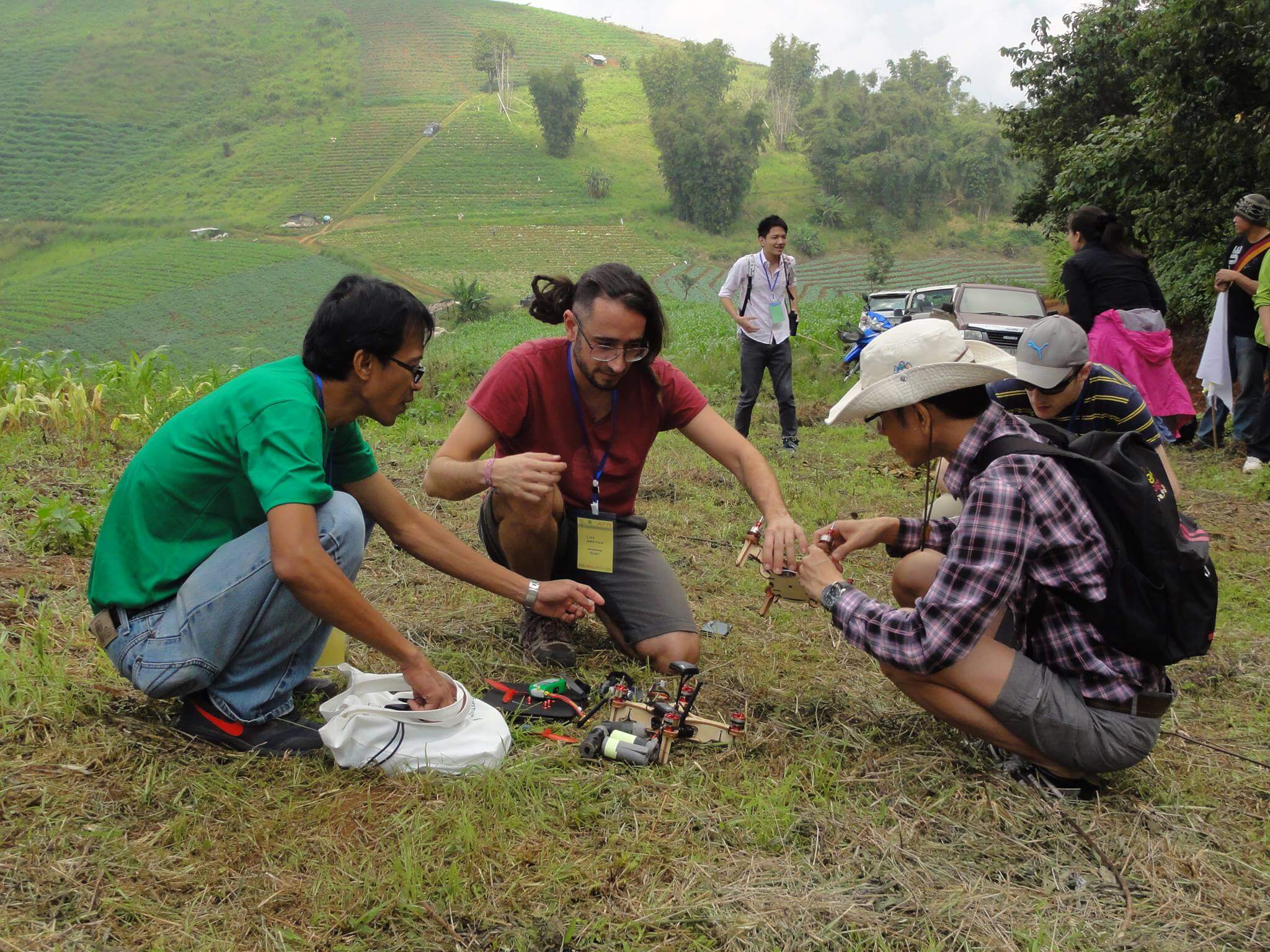




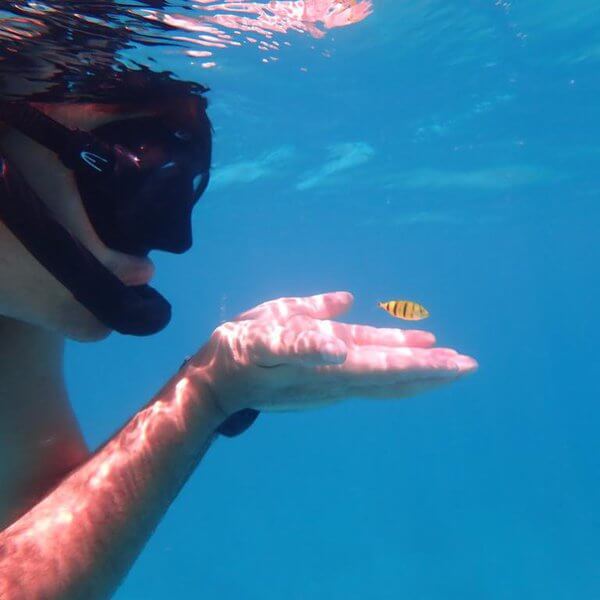
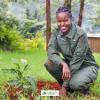




























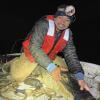




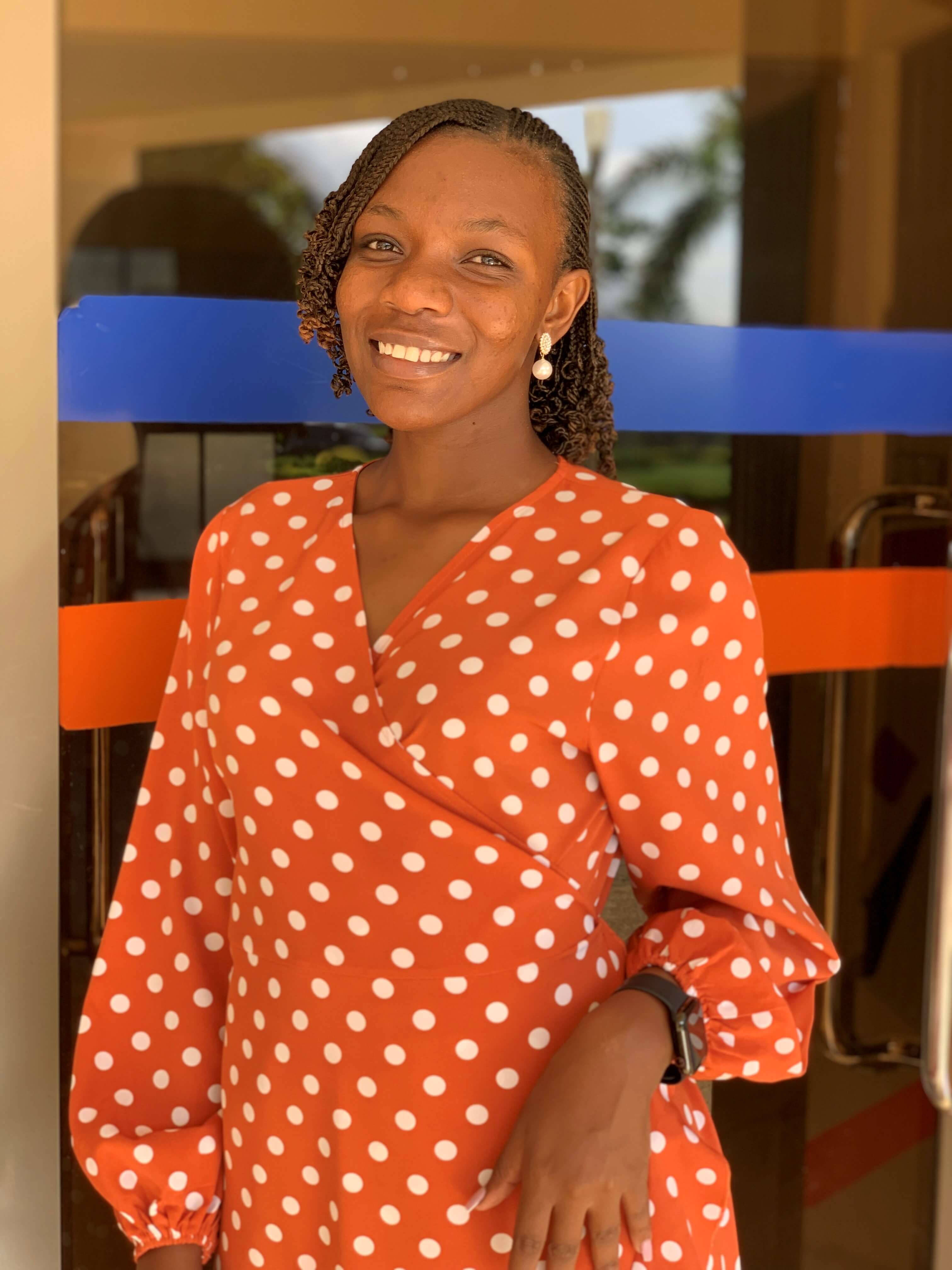





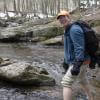

16 October 2024 8:14am
This is chatgpt's answer:
"Here’s a rough idea of the number of parameters in different types of models commonly used in Edge Impulse:
Overall, the model sizes in Edge Impulse are kept small to run efficiently on microcontrollers with limited memory (usually in the range of 256 KB to 1 MB of RAM and a few megabytes of flash). The number of parameters is carefully balanced to ensure good accuracy while maintaining small memory footprints for edge deployment."
Disclaimer: I can't guarantee that all of the above is not a hallucination.
So, not even 1 million parameters. yolov3 tiny model back in the day was 6 million parameters. It's my understanding that the idea behind edge impulse was that it's retrained up at the edge itself. Training requires a lot of memory than inference so by it's nature the models would be further constrained by this.
It's important to be aware of what your model is (How advanced it is), what size it is and how many parameters it contains when you consider your use case to manage your expectations. Later I will post you a few of the terrrible false positives that even the very best and largest models have made to give you an idea of just what AI is actually learning and by extension not learning. So if the best of the best can make terrible mistakes, what will small early models do?
In general though, a large advanced model can do much better at inference with a relatively small number of annotated training images than a really small model with potentially thousands and many more images.
For example, I decided way back in 2019 that yolov3 tiny model was absolutely useless for security because of the boy who cried wolf effect.
The biggest use case I see for very small models would be as a hopefully better replacement to using a PIR sensor. I say hopefully, because both PIR sensors and very small models can have de-generate environmental conditions that cause large number of false positives. At a certain threshold, any perceived gain in power usage may disappear.
I welcome edge impulse to correct anything above that I may have said that was untrue as I personally have never used edge impulse, but I was involved in a project whereby yolov6 was pitted against and compared against a system using edge impulse.